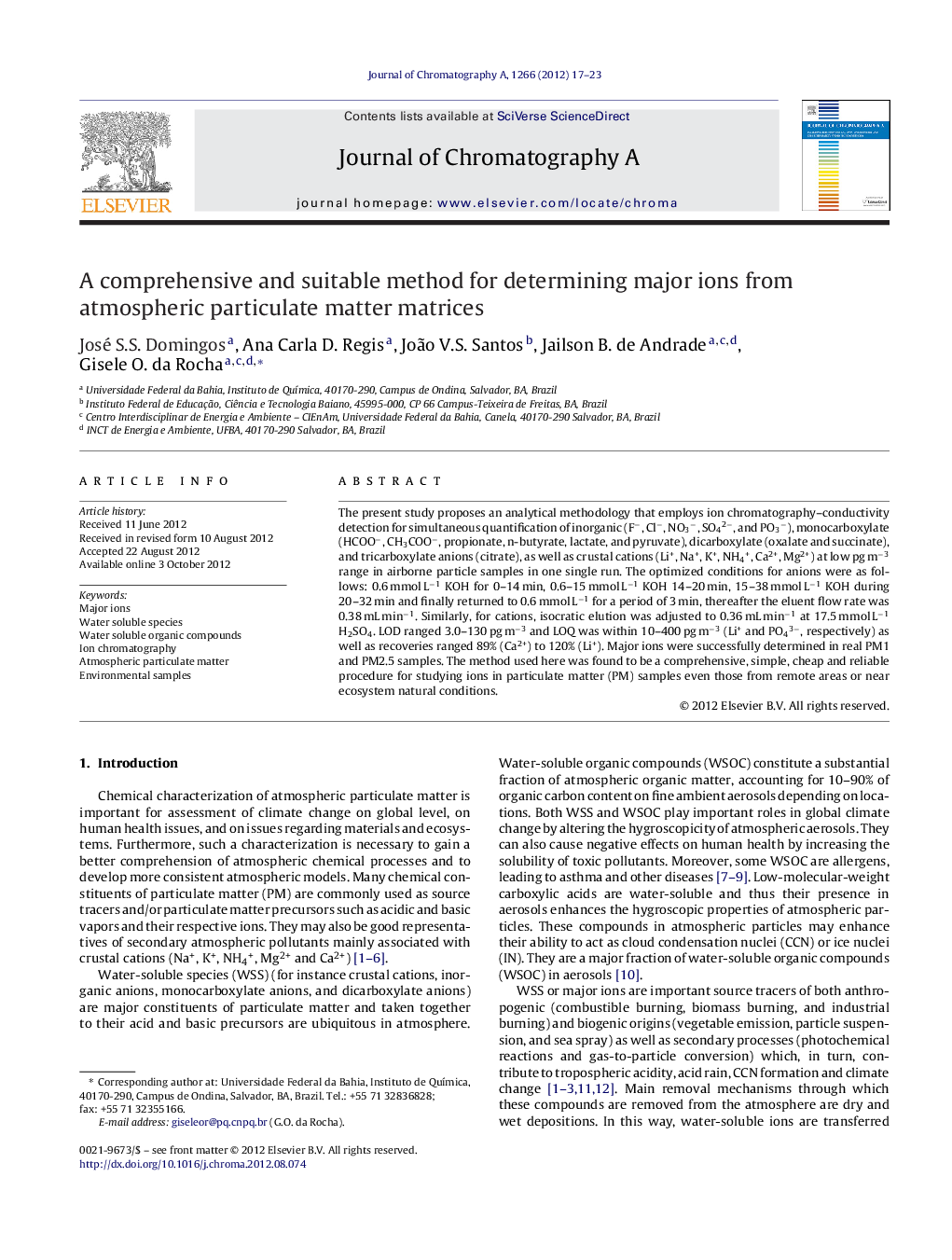| Article ID | Journal | Published Year | Pages | File Type |
|---|---|---|---|---|
| 1201611 | Journal of Chromatography A | 2012 | 7 Pages |
The present study proposes an analytical methodology that employs ion chromatography–conductivity detection for simultaneous quantification of inorganic (F−, Cl−, NO3−, SO42−, and PO3−), monocarboxylate (HCOO−, CH3COO−, propionate, n-butyrate, lactate, and pyruvate), dicarboxylate (oxalate and succinate), and tricarboxylate anions (citrate), as well as crustal cations (Li+, Na+, K+, NH4+, Ca2+, Mg2+) at low pg m−3 range in airborne particle samples in one single run. The optimized conditions for anions were as follows: 0.6 mmol L−1 KOH for 0–14 min, 0.6–15 mmol L−1 KOH 14–20 min, 15–38 mmol L−1 KOH during 20–32 min and finally returned to 0.6 mmol L−1 for a period of 3 min, thereafter the eluent flow rate was 0.38 mL min−1. Similarly, for cations, isocratic elution was adjusted to 0.36 mL min−1 at 17.5 mmol L−1 H2SO4. LOD ranged 3.0–130 pg m−3 and LOQ was within 10–400 pg m−3 (Li+ and PO43−, respectively) as well as recoveries ranged 89% (Ca2+) to 120% (Li+). Major ions were successfully determined in real PM1 and PM2.5 samples. The method used here was found to be a comprehensive, simple, cheap and reliable procedure for studying ions in particulate matter (PM) samples even those from remote areas or near ecosystem natural conditions.
► Ions are major constituents of PM and also ubiquitous in the atmosphere. ► They play an important role in climate change and on human health. ► This proposes determination of 20 ions at low pg m−3 range in one single run. ► Major ions were successfully determined in real atmospheric PM1 and PM2.5 samples. ► This is a comprehensive and reliable procedure for ions study at remote sites.
